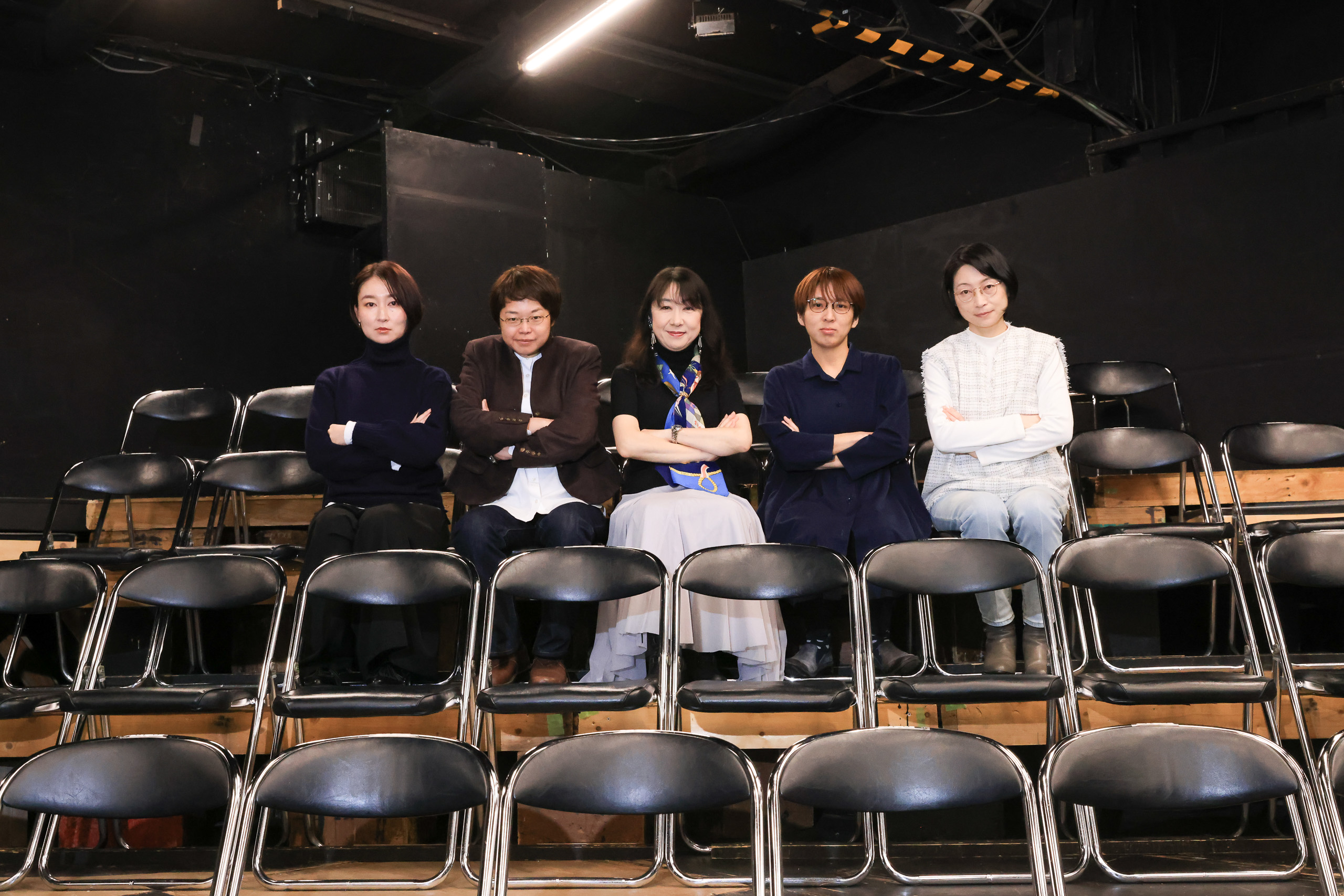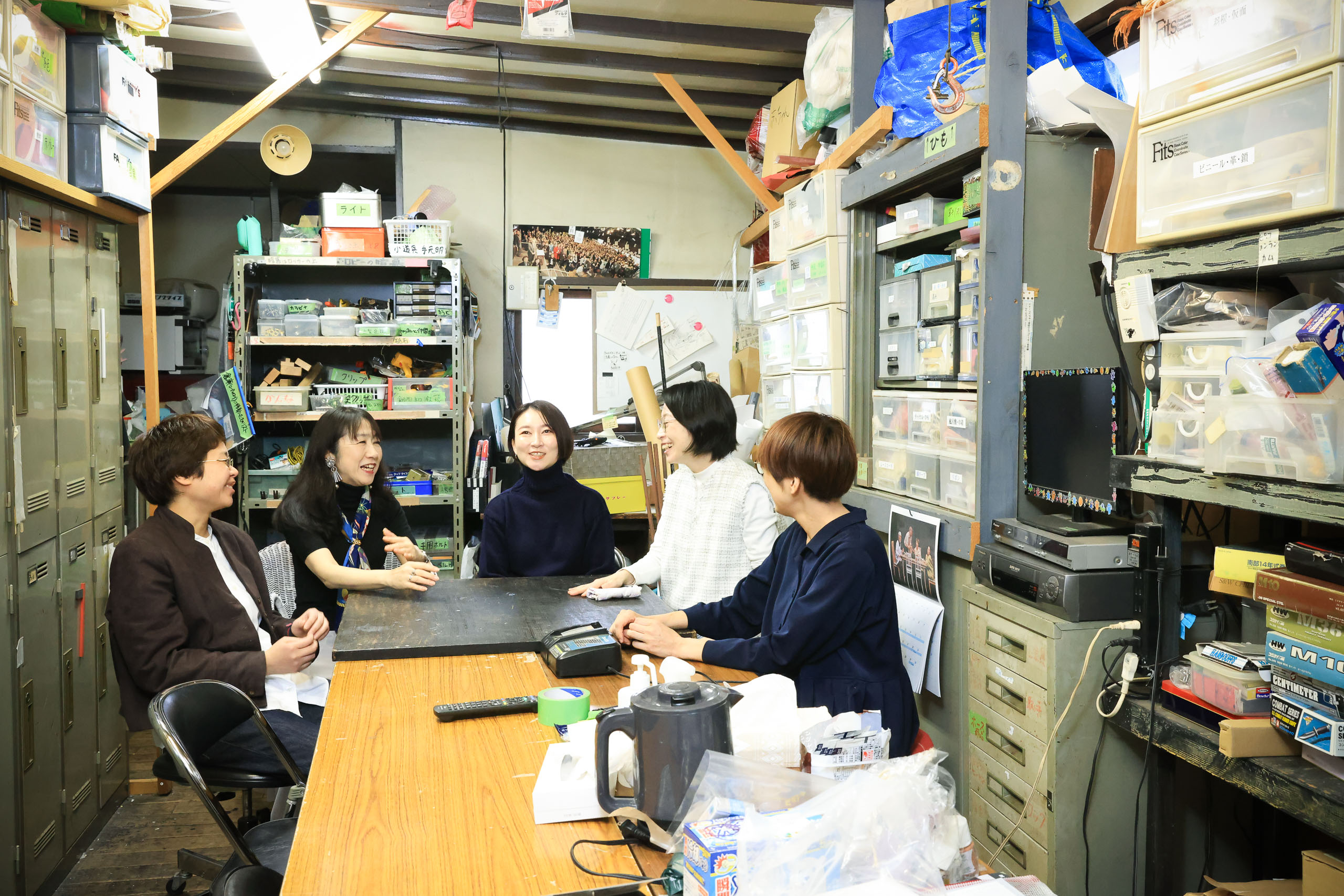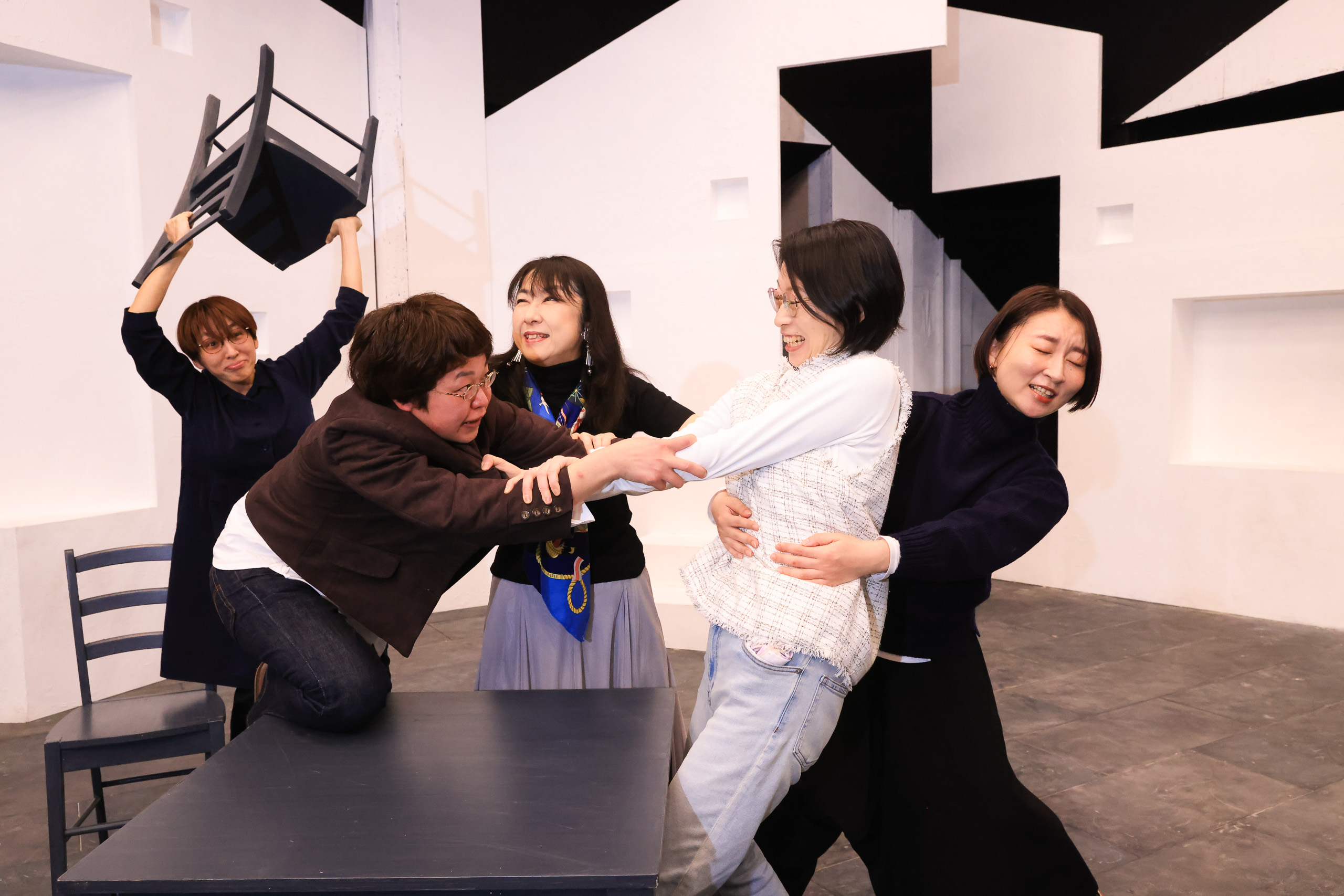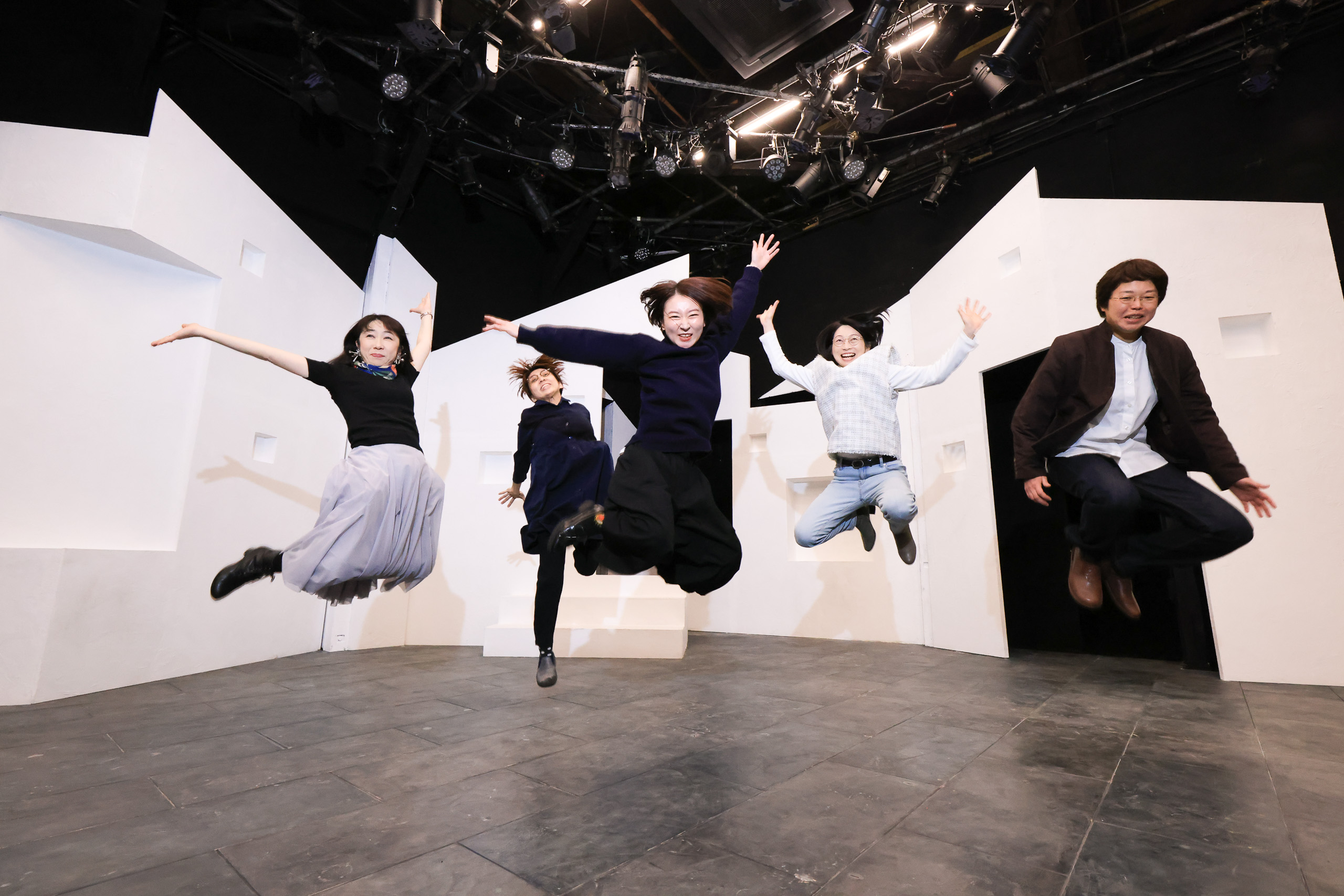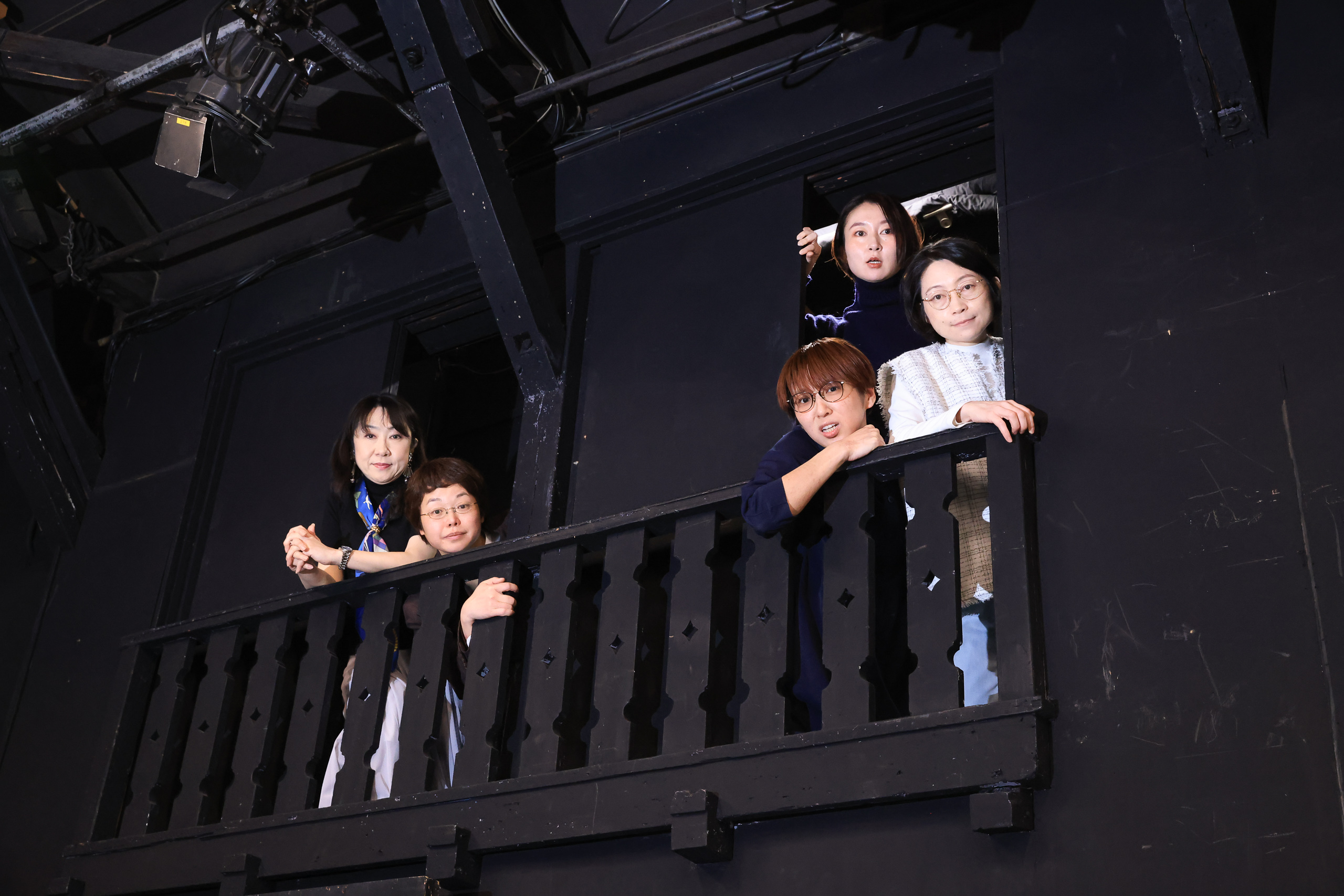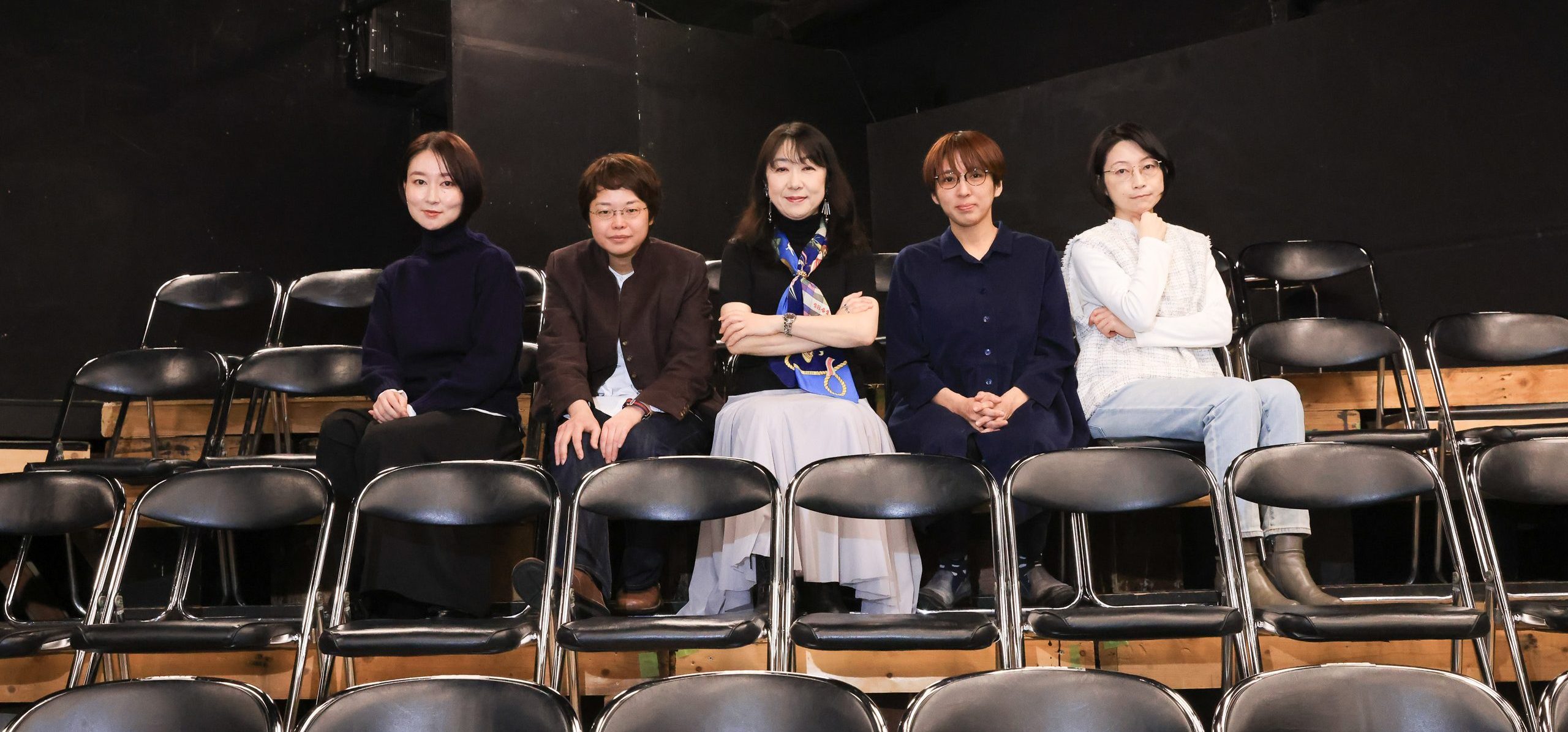
Yuko Matsumoto / Marie Gonohe / Yuka Nishimoto / Kae Inaba / Miyuki Ikuta
Bungakuza Women Part One:Five Directors Whose Individualism was Nurtured by a Theater Company
Photo: Maiko Miyagawa / From left to right, Kae Inaba, Yuka Nishimoto, Yuko Matsumoto, Miyuki Ikuta, Marie Gonohe
The longstanding shingeki1 theater company Bungakuza2 is an incubator for directors who go on to have remarkable careers. Is it a coincidence that many of them are women, or the result of the company’s traditions and training system? To solve the mystery, we brought five directors of different generations together: Yuko Matsumoto, Marie Gonohe, Yuka Nishimoto, Kae Inaba, and Miyuki Ikuta. In part one of this two-part series, we explore the trajectories and interrelationships between these five directors who demonstrate very different qualities despite learning their craft at the same theater company. Part Two will explore the shingeki Japanese theater movement, to which Bungakuza belongs and which was created exactly one century ago. Does the company have new value to add in the twenty-one century to the so-called “new theater” which grew as an art movement during modernization, when Japan was incorporating Western thought and culture? These five people will talk about what shingeki means to them, as people who chose Bungakuza as the place for their activities and bear the weight of the shingeki banner in the contemporary theater world.
We began part one by having each interviewee direct a group photo of themselves based on the same theme, “Four Plus Me” in order to build a visual representation of their personality and directing style.
Interview/text: Rieko Suzuki
English translation: Claire Tanaka
Yuko Matsumoto
With her warm, detailed, and optimistic directing and broad scope, Yuko Matsumoto is active both Bungakuza and elsewhere. The company’s first female director in half a century at the time, she is a pioneer who opened up the company to creating many more female directors.
- Yuko Matsumoto, you became a member of Bungakuza in 1997. Instead of beginning as an actor before changing careers or doing both at once, you poured your passion for theater into directing from the start, which has perhaps made you a role model for other female directors. Your “Four Plus Me” was shot in the seats at the Bungakuza Atelier.
Matsumoto It’s not often you’ll see five female directors all in a row in a single theater company, is it? That’s why I tried lining us up like, “Here we are.” When I debuted as a director, there was Ai Nagai, Eri Watanabe, Keiko Miyata, and Yumi Suzuki, but female directors were still treated like a rare breed. Even within Bungakuza, I was the first since Teruko Nagaoka3 fifty years prior. That’s why all the major newspapers came to ask me, “Isn’t it tough, as a woman?”
Gonohe, Nishimoto, Inaba, Ikuta Eeugh.
Matsumoto I said, “Oh it’s nothing of the sort.” That sort of question is discrimination, isn’t it? That’s why I feel like having the five of us all lined up is a wonderful thing.
Gonohe Sitting in the seats with a straight face, watching the stage, everyone looks like directors, don’t they? The strong energy of gazing at the stage, I feel like it’s clearly visible here. That sense of energy release and presence says “Yuko” to me.
Nishimoto Looking at the stage from the seats is how a director looks at things, and when I sat there, I realized how it captured a moment at work. But each of us five are always looking at our own productions; we’d never been together like this, looking at a stage or rehearsal. So in this photograph, it’s like parallel worlds where each of us in our own time are overlapping with one another, which I find interesting.
Inaba Yuko’s productions deliver something pure, and that’s why I try to receive them honestly. This photograph really embodies Yuko. I want a copy of it for myself.
Ikuta The way she’s able to sit smack in the middle like that is so cool. Yuko always has a clear sense of her vectors.
Marie Gonohe
Marie Gonohe has the ability to grasp the heart of a play and bring it to life, surveying the theater world with bold eyes while sometimes blending humor into her work. Her productions are always topical, even those she puts on outside the company.
- Marie Gonohe, the photo you directed was shot at the production room above the Atelier. You’ve participated in many works over the years as assistant director, costume manager, props manager, and so on, and have apparently established a good reputation for yourself with your careful attention to detail when making props. This room is also used for that sort of work, isn’t it?
- Gonohe When I come to see shows, or when there are year-end events, I often find myself waiting in here. This chaotic atmosphere is like the inside of a director’s head.
Nishimoto It has a friendly feeling. You’re friendly, or rather you don’t have ill intentions. You don’t really try to dig into people’s dark sides.
Gonohe It doesn’t feel artificial at all.
Matsumoto It’s so cluttered I wasn’t sure if we would even be allowed to shoot in here. Before becoming a director, everyone starts their career by helping out, making props, and so on. When you start, you don’t even know how to make anything so you wind up working in here, wrestling with cardboard and craft glue. This place is a sort of starting point for us all, so I think Gonohe made a good choice.
Inaba The combined determination and vulnerability in showing such a cluttered place is very Gonohe.
Ikuta It shows your desire to provide a natural state. If it were me or Nishimoto, we’d feel the pressure to do something and create something more artificial.
Yuka Nishimoto
- Yuka Nishimoto aspires to use the stage as a place to draw individuality out of actors while deepening an understanding of scripts and text structures. She enthusiastically develops her directing activities with everything from the classics to Japanese contemporary plays from Bungakuza’s history, and even freshly written scripts by up-and-coming playwrights.
- Yuka Nishimoto, you directed a photo that resembles a still from a stage show. I heard you spent three hours last night thinking about it. You’re using the stage for the show you directed that’s currently on at Bungakuza Atelier, Andorra (by Max Frisch). Just like the play, it’s a simple set (designed by Mitsuru Sugiura) and each person’s character stands out.
- Nishimoto It looks so staged. These five company members are comrades in arms, strong-hearted partners, while also friendly rivals and contemporaries. To have people in the same profession everywhere you look, even if we have different ways of thinking, is really inspiring. Based on that, I tried making a scene that doesn’t exist in real life. I made the least likely combinations of people. I don’t want people reading too much into it. [Laughs] Above all, this combination is the best way to convey that this is an imaginary scenario.
Matsumoto If I was the one grabbing you, that would be power harassment.
Nishimoto That’s why you’re positioned like you’re stopping us.
Matsumoto Nishimoto really hams it up for the camera.
Nishimoto I’m just grateful that everyone understood my intentions.
Gonohe I enjoyed grabbing her collar. [laughs]
Inaba The way it makes you feel nervous is Nishimoto’s style. It’s like a child’s mischievous prank that makes everyone go, “Huh?” She likes watching them getting flustered and troubled. I think that’s really interesting.
Ikuta It’s not simply humorous, but it includes a sense of hesitation. I would be too scared to do something like that, but Nishimoto has no trouble. That boldness is what makes her interesting.
Kae Inaba
- During her student years, Kae Inaba tried her hand at moving image and installations, and began learning theater around the same time she joined the Bungakuza Actors Institute. She is gaining increased critical acclaim for the way she creates clear and beautiful spaces for the themes and structures of her productions, while also bringing out the nature of human existence in her directing style.
- With the same set in the background, all of you jumped. Kae Inaba, you captured this instant in the group photo you directed. It’s a simple premise, but the individual five poses make it interesting.
- Nishimoto and Ikuta It was fun!
Matsumoto I was fighting for my life. [laughs] I can’t jump at all.
Inaba I figured if the five of us were to get together for the first time in so long, we’d be a little tense. So, I just wanted to capture a moment when we all let our guards down.
Matsumoto Inaba likes beautiful things, so her directing is beautiful too. Not so much in a flamboyant way, but in an intricate sense, like the beauty when pieces fit together perfectly. So I was not expecting her to have us jump.
Gonohe I’m the only one who looks like I’m levitating, in a spiritual sense. It’s beautiful to see everyone floating in midair, and this makes use of the medium in the way that photographs capture a single moment, which is fun. It gives a sense of discovery, like, “Oh yeah, that’s how photographs work.”
Nishimoto It was unexpected and such a good idea. I also had this image of Inaba as liking beautiful things, but she surprisingly incorporated uncertain elements. I felt like I heard her talking about how interested she is in casual human moments.
Ikuta I was also not expecting to jump, but Inaba, you studied videography in university, didn’t you? As I attempted to jump, I was thinking about how that could explain where you got the idea from.
Inaba I get that a lot. “You studied video, so your work is visual.” But I’m not thinking about that. I was worried that everyone would turn out looking the same, but everyone’s jumps are unique, which makes it fun. Yuko’s skirt looks lovely too. I think it turned out well.
Miyuki Ikuta
- Miyuki Ikuta has gained accolades for the way she visualizes and embodies the social themes within plays through collaborations with actors. She is active both in and outside Bungakuza. She has directed a work for the Palestinian Theater Performance Series, held a reading of Gaza Monologue 2023 (Ashtar Theatre), and continues to respond to modern society through theater.
Miyuki Ikuta, you used the Atelier balcony for your shot. What was the reason for choosing that place? It feels like you chose it because you wanted to find something fun that you could do in that spot, rather than the image that it would project.
- Ikuta At first, I wanted to shoot from the seats, but I was the last one to take a picture, and everyone else had already done a lot of variations and formations, so I changed my plan and chose the balcony. It’s a place I like very much, and I thought it would look interesting to have people coming out of that limited space. Then I just went with the flow and let everyone pose how they liked for the shot.
Matsumoto It resulted in a fun photo. But everyone’s got a different story.
Nishimoto There isn’t a unified premise, is there? [laughs] We’re looking at the same thing, but it’s different. I guess that could be the premise.
Matsumoto This railing in the Atelier is lovely. It’s so old fashioned and nostalgic, isn’t it? Just looking out through there makes me feel happy.
Gonohe The way everyone is squeezed together is interesting. It’s like we’re goofing around. Ikuta’s bright, playful spirit shines through. We look close, like sisters.
Nishimoto The variety is part of Ikuta’s style, I think. Everyone is looking at different things with expressive faces, and it’s like a toybox with all the toys spilling out.
Inaba I noticed this when we were deciding where to shoot, and during shooting too. She really takes a good look around and quickly decides what to do. That cleverness and lack of stagnation is Ikuta’s personality. And then the result is somehow unexpected, like it just came out or came about with a certain clarity, which I love. There’s a sense of “I don’t know how it’s going to turn out, but let’s try it!” that is Ikuta’s way of making things.
Ikuta I feel like things wound up in a very different place than my initial idea of taking a photo in the seats. But I think this project allowed us to enjoy the differences between us five.
- Having such highly individual female directors together like this gives a sense of the changing times, and it also seems related to the culture of the company. Looking back on your own careers, in particular the environment surrounding the period of your own directorial debuts, is there anything that comes to mind?
- Matsumoto I admired Hitoshi Uyama4 and I wanted to direct, so I joined Bungakuza. At first, of course, I worked backstage making props and sets and so on. But I was so bad at it. I felt like I had to quickly let everyone know what I wanted to do or I would get stuck and disgruntled, continuing to do a poor job at making props and sets. Lucky for me there was the Atelier at Bungakuza, and beside that was the rehearsal space as well. There were so many actors, so I would approach people with a gap in their schedule and ask them to appear in a play for me, and they did it without pay. In the end, I wound up putting on about three shows before I made my directorial debut at the company. At that time, Ichiro Inui5 was the Chairman of the company and he was tolerant of young people trying to do things, and he would even come and watch the shows out of curiosity as an older member. That made it an easy environment to try things out. That company culture is something that continues to this day, and when the younger members start doing something new, the older members are always saying, “What are you up to?” and taking an interest in what they’re doing. I think for sure the presence of the Atelier studio theater is a big part of that. The founding member, Bunroku Shishi, wrote the Atelier Charter,6 which touches on the spirit of experimentation, and for young people who might not yet be considered able to take on a theater-sized piece, the Atelier no Kai is left to the young directors and playwrights, and that spirit has always been carried on by the elder members.
- Even so, before you, there hadn’t been a female director at Bungakuza in several decades, had there?
- Matsumoto That’s true. When I joined, there was still this lingering image that directing was a man’s job. But it was a time when Hiroko Watanabe became the first artistic director of the New National Theatre, Tokyo, and Koharu Kisaragi was active. I began to hear the names of many female directors, and the number of older members guiding people under the abusive apprenticeship system was dwindling. That environment came together and I think it made it much easier for younger women to get involved. And that’s how we five are now able to gather like this. We’re all unique, motivated, self-centered in a good way, and kind to people.
Gonohe I actually feel like I am treated more like a “female director” when I’m working on projects outside Bungakuza. Inside Bungakuza, there’s no sense, be it from male or female members of the company, cast or crew, of a difference when a woman takes command. I think Haruko Sugimura’s7 long term as top of the company had a big impact. A culture has grown of having the capacity to accept people based on an understanding of their individuality rather than whether they are male or female.
Ikuta The president of the Bungakuza Co., Ltd [separate from the Bungakuza theater company]is also female.
Nishimoto When I joined, there were more men on the production team than there are now, but there was already a sense of freedom. You could say your opinion without anyone putting you down. It’s not just men and women: I feel like it’s the kind of organization where people don’t really pull seniority on each other either. They don’t deny the urge to create. If you want to do something, you do it. “Why not just do it?” That’s the attitude. Conversely, if you don’t have something you want to do, it’s a hard place to be. I am able to stay because I have things I want to do.
Inaba Speaking of the industry on the whole, I think we’re in a real transitional period now. It’s like we’ve finally reached the point where talking about men vs. women feels stupid. But in the case of Bungakuza, there is a sense that such comparisons of men and women, as well as discussions of generations and the industry, have all been concentrated here, so issues that come up in the industry overall have already been dealt with in Bungakuza a little earlier. In other words, it’s not as though there was never any strife, but we’ve always tried to resolve things by talking them out. Within Bungakuza there is the Production Subcommittee and the Acting Subcommittee, and there are a lot of opportunities within the organization to root out issues and discuss them. The organization is very flexible in that way; there is this culture of “it might be a pain, but let’s talk it out,” which leads to people having the courage to talk about things and try new things. Even if people criticize what you say, there really are a lot of things you wouldn’t notice about yourself if nobody said anything. It’s not just the subcommittees, but the year-end parties, new year parties, and lots of other committees. Those opportunities, the environment where it’s semi-mandatory to talk about things, it’s all really good. We even talk about things like the Production Department’s dirty lockers that we need to clean, and that communication is part of our culture. If I’m busy and develop a tendency to lose interest in Bungakuza’s goings-on, I feel a sense of guilt for that.
Ikuta I haven’t really thought about the male-female divide either. In my case, I was making props under Gonohe, or I’d take over on a touring show and so on, helping each other through those vertical connections. Things like how to make a presentation on a project was something I felt comfortable asking older members about, and they gave me advice. So that’s why if I had been a freelance director, I wonder how I would have built a career. With a theatre company, you manage to see model cases, and in my case, I had people like Satoshi Kamimura8 and Masanori Takahashi9 from the generation before mine starting to be active, and Gonohe and Kae (Inaba) were just debuting, so I was able to directly ask them, “How do you choose a work?” I actually made presentations to the Atelier’s committee myself, and I was able to get feedback. This is how a director builds up the necessary knowledge, and having people around who will teach that is the strength of a theater company, which I think is a huge factor.
- The atmosphere with everyone here today was very flat, in the good sense. And at the same time you’ve got a hierarchy of seniority, and you’re all sometime rivals. It’s all very healthy.
- Matsumoto If I fail during the planning meeting, I spend the day in a rage though. Damnit!
Nishimoto Now that you mention it, at the same time as the presentation for Inaba’s debut work, Crossfire (by Michel Azama) I failed my presentation. On the way home, I remember I threw my bag into the street and my iPod and iPad went flying. I was so pissed.
Matsumoto I am never mad at the person who won, just at myself. The part of me that wasn’t good enough.
Nishimoto Yeah, for sure.
Matsumoto I’ve lost to Ikuta twice. But Ikuta is really good at presentations. We listen to each other’s project plans right there, so it really helped me know how to phrase things. That’s why we directors are rivals while also being comrades. And that’s why when we go to one another’s plays and they’re no good, we get mad, and even when they’re good, we get mad then too.
Ikuta Yeah! That’s so true!
Continued in Part Two
-
Shingeki
At the start of the twentieth century, kabuki and other existing Japanese theater styles were labeled “old theater” (kyugeki), and the contemporary theater that was born to reflect the new modern era was called “new theater” (shingeki). It is a theater of realism, and at first mainly comprised productions of translated foreign, mostly European, plays. Shingeki advocated for a noncommercial form of theater not swayed by the capitalist aims of entertainment. Along with this emphasis on artistry, it became connected with left-wing movements as theater for the people opposed to the bourgeoisie. After World War II and the Red Purge, its politics diminished, and theater companies like Bungakuza, Haiyuza, and Mingei competed to develop highly individual styles and reached the peaks of their popularity. In the late 1960s, a new, anti-shingeki movement emerged, and eventually usurped shingeki’s place as the mainstream of contemporary theater in Japan. With new talent appearing in recent years, though, the image of shingeki seems to be changing.
-
Bungakuza (Bungakuza Theatre Company)
In 1937, the Bungakuza Theatere Company was established by three literary figures (Kunio Kishida, Mantaro Kubota, and Toyo Iwata). Within Japan’s shingeki movement, which emphasized textual interpretation due to the influence of modern Western theater, Bungakuza particularly emphasized literature and artistry, while also collaborating with the playwrights of the era. The company is known for being the first to bring the works of Tennessee Williams and Thornton Wilder to Japan. The affiliated actors institute trains actors and staff, and their Atelier is also well-known for its experimental theater performances. https://www.bungakuza.com/index.html
-
Teruko Nagaoka
Born in 1908, Teruko Nagaoka was an actor and one of the first female directors in Japan. She went to France in 1928 and studied theater for two years, before returning to Japan to become the leader of Theater Comedy, where she translated, directed, and acted from 1931 to 1937. In 1939, she directed her own play, In Menton, at Bungakuza, which she subsequently joined and remained a member until 1968. From 1951, she began acting in addition to directing and was critically acclaimed. She died in 2010.
-
Hitoshi Uyama
Theater director Hitoshi Uyama joined Bungakuza in 1982. He was the artistic director for drama at the New National Theatre, Tokyo from 2007 to 2010. A trusted veteran of the stage with a broad range of work, he has directed many of Shakespeare’s history plays including the Henry VI trilogy, much of Hisashi Inoue’s works, as well as operas and musicals. He has been Chairman of Bungakuza since 2024 .
-
Ichiro Inui
Born in 1916, the director Ichiro Inui participated in the establishment of Bungakuza in 1937. He built Bungakuza’s legacy repertoire with plays starring Haruko Sugimura such as Onna no Issho/One Woman’s Life, Kaidan Botan Doro/The Tale of the Peony Lantern, and Hanaoka Seishu no Tsuma/The Doctor’s Wife, in addition to working in kabuki and shinpa. He was still leading the company in 2010 when he died at age ninety-four, a walking encyclopedia of all things Bungakuza to the end.
-
Bungakuza Atelier and The Atelier Charter
Bungakuza Atelier is a theater and rehearsal space that was built in 1950 on the company’s grounds to provide a place for members to hone their disciplines and stage experimental shows. The Atelier Charter was written by director and novelist Toyo Iwata (pen name Bunroku Shishi), one of the founders of Bungakuza, in 1958 in order to reaffirm the philosophy and intended purpose of the Atelier. It was distributed it to every company member. It says, in part, that “the Atelier is to be used for instructional scripts while there may also be cases where scripts are staged that have a difficult-to-understand, radical artistic character unsuitable for our main productions.”
-
Haruko Sugimura
Born in 1906, the actor Haruko Sugimura was involved in founding Bungakuza in 1937. She starred in many long-running shows, including Onnna no Issho/One Woman’s Life (staged 947 times), A Streetcar Named Desire (593 times), Hanaoka Seishu no Tsuma/The Doctor’s Wife (634 times), Furu America ni Sode wa Nurasaji/The Rains of America Will Never Dampen My Sleeves (365 times), and Kaidan Botan Doro/The Tale of the Peony Lantern (329 times counting shows outside of Bungakuza). She is a legendary figure that has gone down in Japanese theater history for her own work and as Bungakuza’s great lead actress. She was also active on stage and screen outside Bungakuza, most notably in many Yasujiro Ozu films, as well as the films of major Japanese directors like Mikio Naruse, Kenji Mizoguchi, Keisuke Kinoshita, and Akira Kurosawa. She died in 1997.
-
Satoshi Kamimura
Born in 1979, Satoshi Kamimura is a director who was a member of Bungakuza from 2006 until 2018. He is especially acclaimed for his productions of contemporary foreign plays. He will become the artistic director for drama at the New National Theatre, Tokyo in 2026.
-
Masanori Takahashi
Born in 1978, the director Masanori Takahashi joined Bungakuza in 2005. He mainly directs new works by contemporary playwrights such as Takeshi Kawamura, Tatuo Kaneshita, Norihiko Tsukuda, Kenji Higashi, Go Aoki.
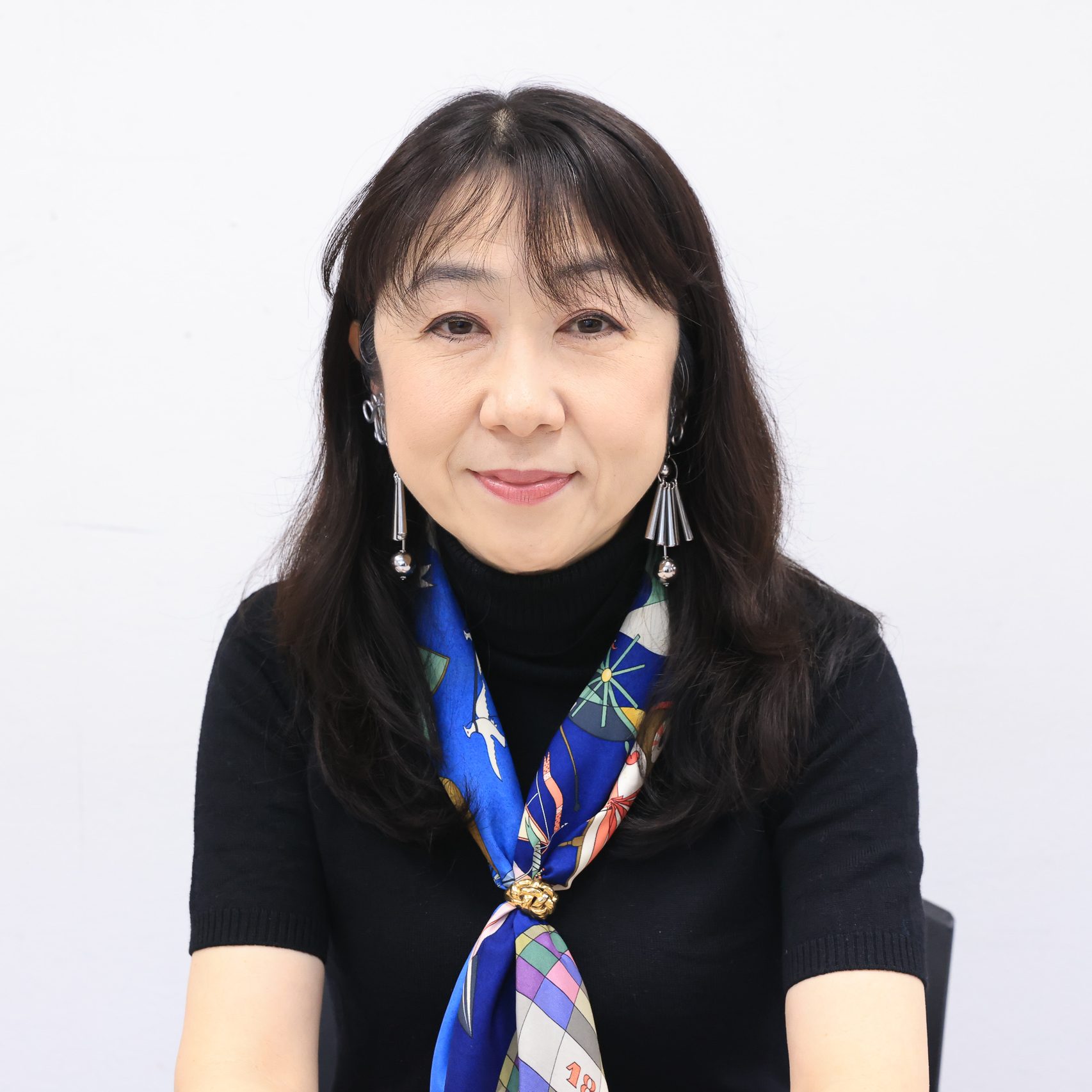
Photo: Maiko Miyagawa
Yuko Matsumoto
Born in Hirakata, Osaka, in 1967, theater director Yuko Matsumoto graduated from Meiji University’s Department of Literature with a major in drama and theater arts. She joined Bungakuza Actors Institute in 1992 and was promoted to full member in 1997. In 1999, she studied in London for one year on the Agency for Cultural Affairs Program of Overseas Study for Upcoming Artists. Her first production after returning to Japan, Pentecost, was awarded the 2002 Yuasa Yoshiko Prize, which is given to the best staging of a translated foreign language stage play. In 2006, she won the Mainichi Art Award Senda Koreya Prize for Nukegara (Bungakuza Atelier no Kai) and Peter Pan (Horipro). In 2019, Matsumoto won the Kinokuniya Drama Award for Personal Achievement and Excellence in Directing at the Yomiuri Theater Awards for Hito wa mina, Hitonamino (Matchpoint) and Three Winters (Bungakuza Atelier no Kai), and in 2020 won the Minister of Education, Culture, Sports, Science and Technology’s Art Award for Fifty-Four Eyes (Bungakuza).(Updated July 2024)
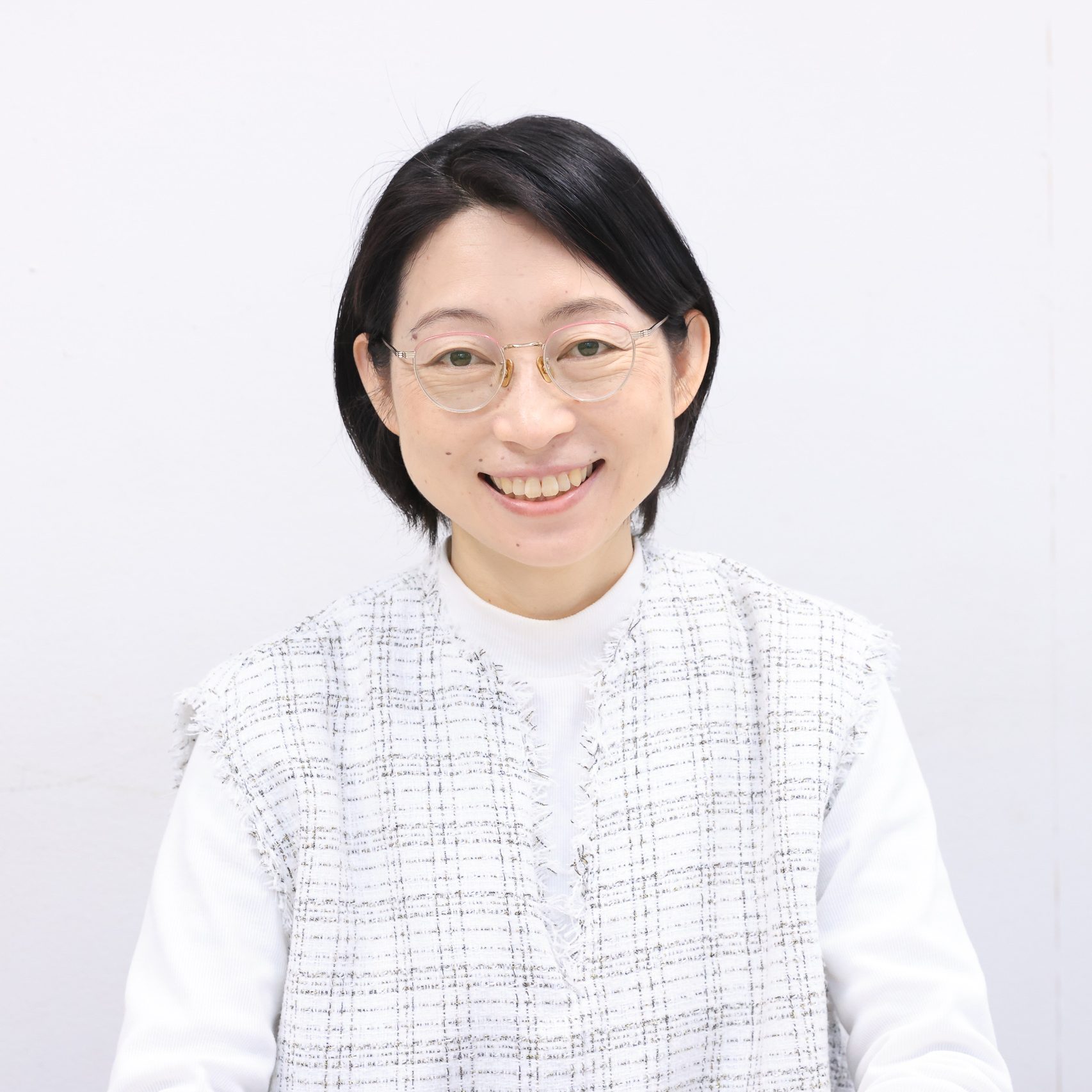
Photo: Maiko Miyagawa
Marie Gonohe
The director and playwright Marie Gonohe was born in Sanda, Hyogo. She graduated from Waseda University’s School of Humanities and Social Sciences with a major in theater and film arts. She founded her own theatre troupe and took part in small stage theater before joining Bungakuza Actors Institute in 2005. In 2010, she became a full member of Bungakuza. In 2016, she directed her first play for Bungakuza, Kaji/Rudder in the double bill Kadode/Kaji (Bungakuza Atelier no Kai). In addition to directing, she also writes plays and children’s stories. Plays she has directed at Bungakuza include The New Hamlet (reading) in 2014, Two Men at Play with Life (independent project) in 2021, Coffee to Ren’ai (adaptation and direction) in 2022, and Arabian Nights (Bungakuza Atelier) and Ishi o Arau (Bungakuza Atelier no Kai) in 2024. She directs many works outside of Bungakuza as well, such as Maxim Gorky’s The Lower Depths for the New National Theatre, Tokyo in 2019. In 2023, Gonohe won Excellence in Directing at the Yomiuri Theater Awards for Coffee to Ren’ai, The Visit (both at the New National Theatre, Tokyo), and Venus in Fur (Setagaya Public Theatre). (Updated July 2024)
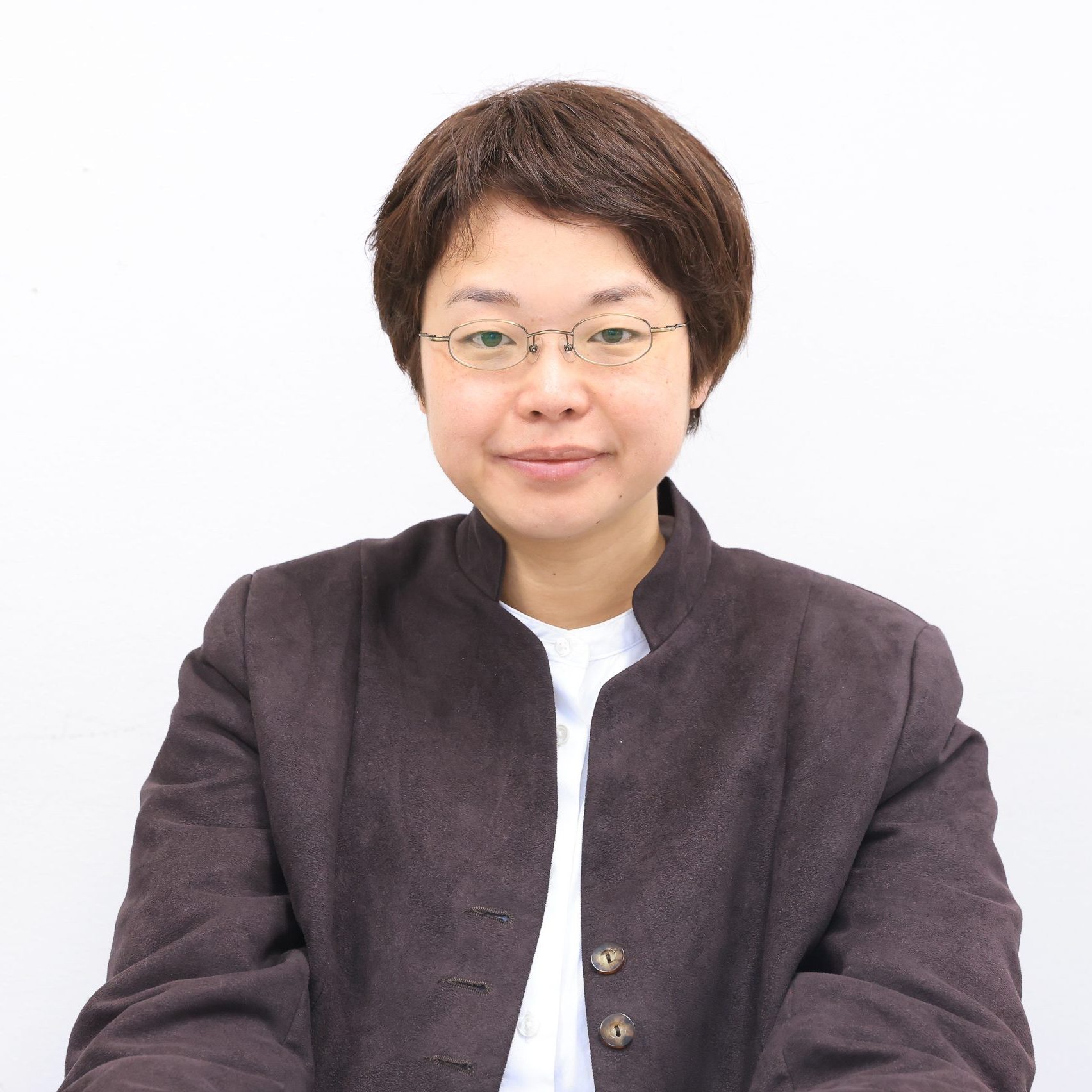
Photo: Maiko Miyagawa
Yuka Nishimoto
The director Yuka Nishimoto graduated from the Theater Program Director’s Course at Nihon University College of Art. In 2006, she joined the Bungakuza Actors Institute, and became a full member in 2012. Her first play directed at Bungakuza was A Day in the Death of Joe Egg (Bungakuza Atelier no Kai) in December 2018. In 2019, she went to Germany on the Agency for Cultural Affairs Program of Overseas Study for Upcoming Artists, and spent a year training in Berlin at the Maxim Gorki Theater and Schaubühne. Recent directing work includes A Space of Time (Bungakuza Atelier no Kai), Sick (Theatre Office Natori), Sabiiro no Mokuba (Gekidan Galba), At the Black Lake (Association of Japanese Theatre Companies), and Andorra (Bungakuza Atelier no Kai) (Updated July 2024)
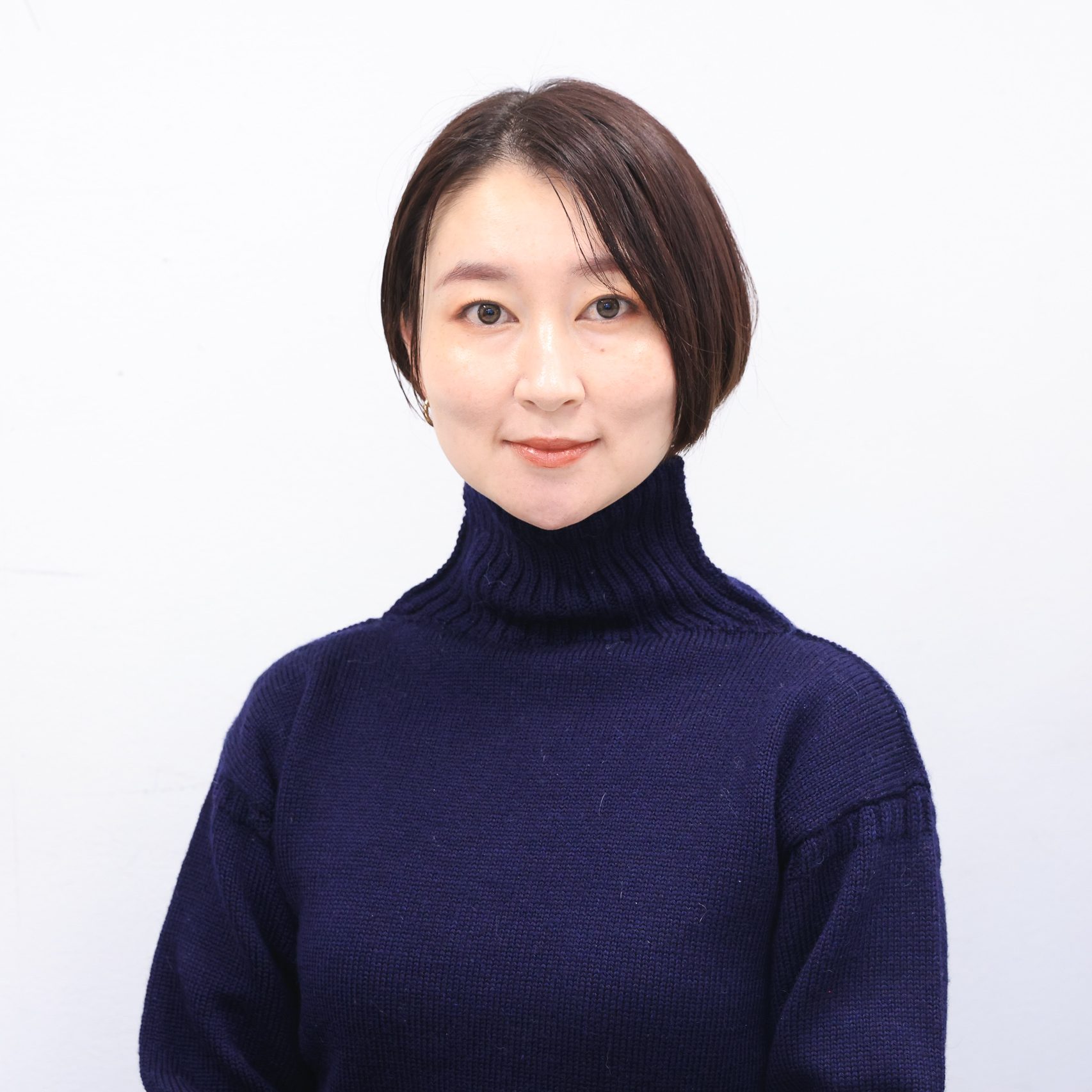
Photo: Maiko Miyagawa
Kae Inaba
The director Kae Inaba graduated from the Film Program Director’s Course at Nihon University College of Art. She began making films while still in school. After joining Bungakuza in 2008, she became a full member in 2013, and in April made her directing debut at Bungakuza Atelier no Kai with Crossfire. Major directing credits include The Wild Duck and The Atami Murder Case (Bungakuza Atelier no Kai), The Misunderstanding and My Month (New National Theatre, Tokyo), Women in Blue Stockings (Piccolo Theater), The Unburied Dead, The Mother, and The Physicists (Office Cottone). Recent directing includes The Unburied Dead (PARCO), Breaking the Code (Gorch Brothers), It’s not a bad thing that people around the world fall into a crevasse, Strange Snow, and Shuji Terayama Version of Lysistrata – Eros in Wonderland (Mixzone). In 2023, Inaba won Best Director at the Yomiuri Theater Awards for The Physicists and The Ghost is Here. (Updated July 2024)
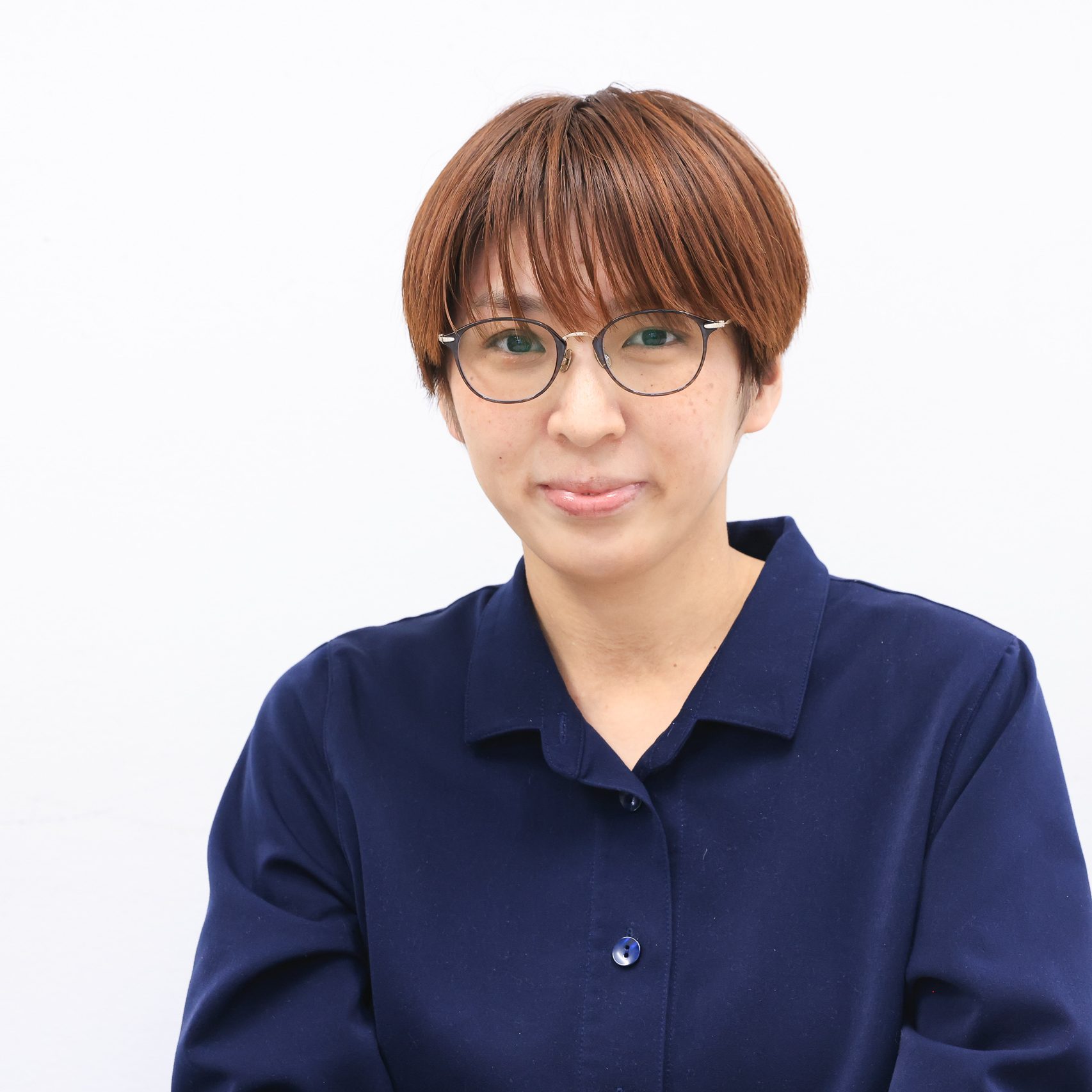
Photo: Maiko Miyagawa
Miyuki Ikuta
The director Miyuki Ikuta was born in Osaka. She graduated from the Graduate School of Music at Tokyo University of the Arts, entering the Bungakuza Actors Institute in 2011 and becoming a full member in 2016. The same year, she went to Germany on a language study scholarship with the Goethe Institut Culture Program. In 2017, she directed her first play for Bungakuza, Hato ni Mizu o Yaru (Bungakuza Atelier no Kai), followed by The Last Fire in 2018 and Girls in Crisis in 2020. She also began working as a member of the theater group Riseiteki-na-Henzentachi in 2018. In 2023, Ikuta won Best Director at the Yomiuri Theater Awards for her Palestinian Theater Performance Series Prisoners of the Occupation (Theatre Office Natori), Naval Encounter (Riseiteki-na-Henzintachi), and Butcher (Theatre Office Natori), and also won the Minister of Education, Culture, Sports, Science and Technology’s Art Encouragement Prize for New Artists for Prisoners of the Occupation, Anatomy of a Suicide (Bungakuza Atelier no Kai) and more. (Updated July 2024)


